Explore the world of transistors with our practical guide on testing transistor nature and terminals using a multimeter. Learn the essential steps, tools, and safety precautions for accurate measurements. Gain hands-on experience to identify NPN or PNP transistors and assess terminal functionality. Elevate your electronics skills with this comprehensive tutorial for students and enthusiasts alike.”
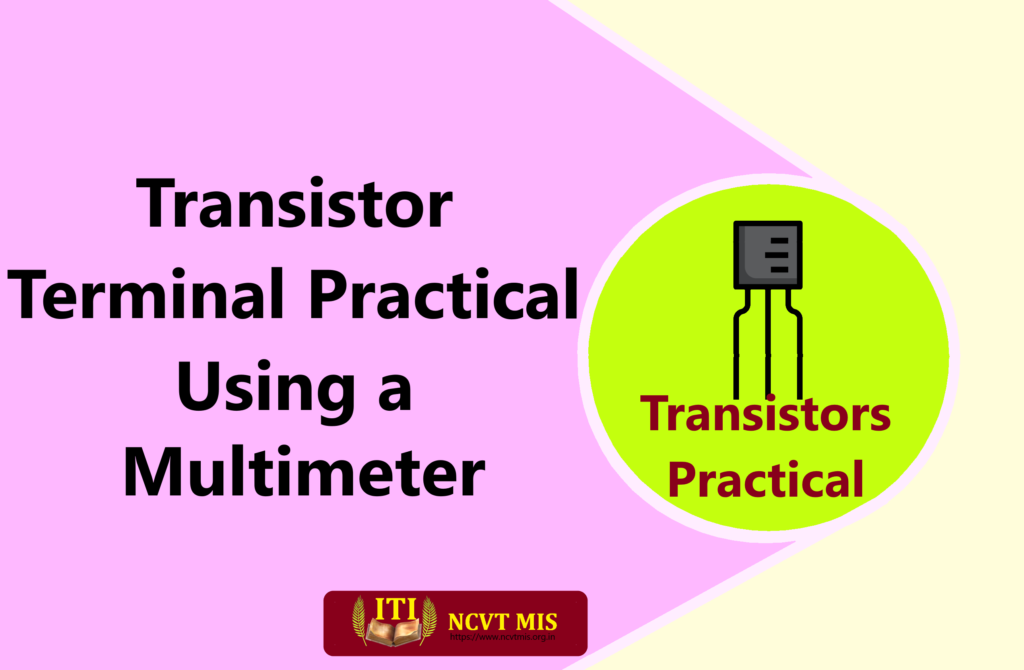
- उद्देश्य(Aim):
- महत्वपूर्ण उपकरण(Important Tools):
- कार्य विधि (Working Method):
- सुरक्षा (Safety):
- निष्कर्ष (Conclusion):
उद्देश्य(Aim):
इस व्यावहारिक सत्र का प्राथमिक उद्देश्य प्रतिभागियों को प्रकृति (एनपीएन या पीएनपी) का परीक्षण करने और मल्टीमीटर का उपयोग करके ट्रांजिस्टर के टर्मिनलों (कलेक्टर, बेस और एमिटर) की पहचान करने की प्रक्रिया से परिचित कराना है।
महत्वपूर्ण उपकरण(Important Tools):
मल्टीमीटर(Multimeter):
- प्रतिरोध, वोल्टेज और करंट को मापने में सक्षम डिजिटल या एनालॉग मल्टीमीटर का उपयोग करें।
- सुनिश्चित करें कि इसमें डायोड परीक्षण मोड है और उचित सीमा निर्धारित करें।
ट्रांजिस्टर(Transistor)
- एक ज्ञात और कार्यात्मक ट्रांजिस्टर चुनें, अधिमानतः एनपीएन या पीएनपी प्रकार का।
- सुनिश्चित करें कि ट्रांजिस्टर की डेटाशीट संदर्भ के लिए उपलब्ध है।
तार(Cable)
- सुरक्षित कनेक्शन के लिए एलीगेटर क्लिप या प्रोब के साथ उच्च गुणवत्ता वाले कनेक्टिंग तारों का उपयोग करें।
कार्य विधि (Working Method):
1. ट्रांजिस्टर पिन की पहचान(Indentify Transistor Terminal):
ट्रांजिस्टर प्रकार(Transistor Type):
- यह निर्धारित करने के लिए कि ट्रांजिस्टर एनपीएन या पीएनपी है, डेटाशीट देखें या दृश्य संकेतों का उपयोग करें।
टर्मिनलों का पता लगाएं(Indentify Terminal):
- तीन टर्मिनलों को पहचानें: कलेक्टर (सी), बेस (बी), और एमिटर (ई)।
2. मल्टीमीटर की स्थापना(Setting Up the Multimeter):
डायोड परीक्षण मोड (Diode Testing Mode):
- मल्टीमीटर चालू करें और डायोड परीक्षण मोड का चयन करें।
- सुनिश्चित करें कि जांच सही टर्मिनलों (लाल से सकारात्मक, काले से नकारात्मक) से जुड़े हैं।
3. प्रकृति के लिए परीक्षण (NPN या PNP):
एनपीएन ट्रांजिस्टर(NPN Transistor Testing):
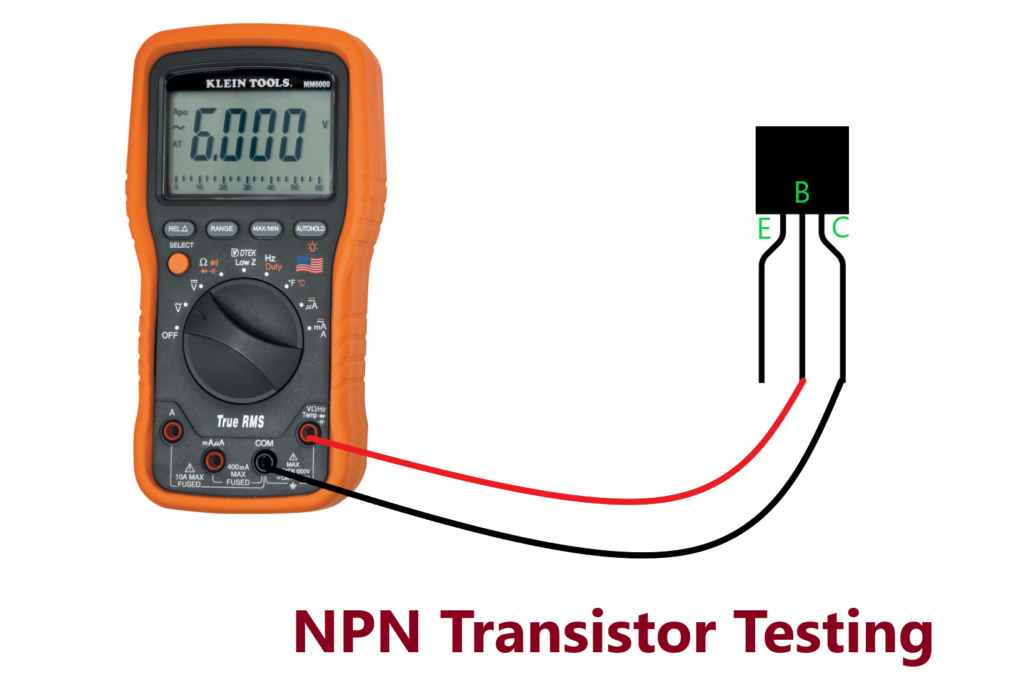
- काली लीड को कलेक्टर (C) से कनेक्ट करें और लाल लीड को आधार (B) से स्पर्श करें।
- मल्टीमीटर पर वोल्टेज ड्रॉप का निरीक्षण करें।
पीएनपी ट्रांजिस्टर(PNP Transistor):
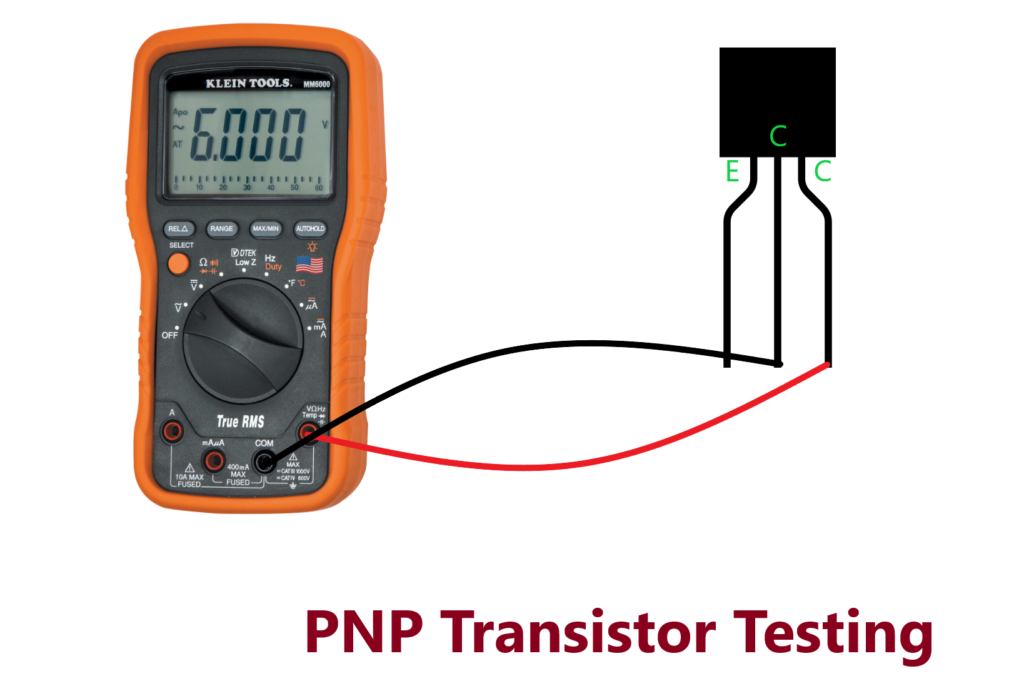
- लीड को उल्टा करें; कलेक्टर को लाल और आधार को काला।
- वोल्टेज ड्रॉप अब पीएनपी ट्रांजिस्टर को इंगित करता है।
4. टर्मिनलों के लिए परीक्षण(Testing for Terminals):
उत्सर्जक परीक्षण (Emitter Testing):
- ब्लैक लेड को एमिटर (E) से कनेक्ट करें और रेड लेड को बेस (B) से स्पर्श करें।
- एक छोटा वोल्टेज ड्रॉप एक कार्यात्मक एनपीएन ट्रांजिस्टर को इंगित करता है। पीएनपी के लिए लीड को उलट दें।
5. प्रतिरोध मापना (Measuring Resistance):
प्रतिरोध मोड (Resistance Mode):
- मल्टीमीटर को प्रतिरोध (ओम) मोड पर स्विच करें।
- लीड को कलेक्टर और एमिटर टर्मिनल से कनेक्ट करें।
- कम प्रतिरोध रीडिंग एक कार्यात्मक ट्रांजिस्टर की पुष्टि करती है।
सुरक्षा (Safety):
- सुनिश्चित करें कि प्रतिभागियों को क्षति से बचने के लिए मल्टीमीटर पर सही सेटिंग्स के बारे में पता है।
- निर्दिष्ट वोल्टेज और करंट सीमा से अधिक न होने के महत्व पर जोर दें।
- किसी भी शारीरिक क्षति से बचने के लिए ट्रांजिस्टर और तारों को सावधानी से संभालें।
निष्कर्ष (Conclusion):
इस प्रैक्टिकल को सफलतापूर्वक पूरा करके, प्रतिभागियों को मल्टीमीटर का उपयोग करके ट्रांजिस्टर का परीक्षण करने में आवश्यक कौशल हासिल करना चाहिए। ट्रांजिस्टर की प्रकृति और टर्मिनलों को समझना इलेक्ट्रॉनिक्स में शामिल किसी भी व्यक्ति के लिए महत्वपूर्ण है, जो अधिक उन्नत सर्किट विश्लेषण और डिजाइन के लिए एक ठोस आधार प्रदान करता है।
- Resistance Measure with the help of Voltmeter and ammeter
 Let’s learn how to measure resistance using a voltmeter and ammeter in a simple circuit setup. You’ll study step-by-step instructions, understand the application of Ohm’s Law, and gain valuable insight into accurate resistance measurements. वोल्टमीटर और अमीटर की सहायता से प्रतिरोध मापन प्रैक्टिकल उद्देश्य: (Aim) इस प्रैक्टिकल में हम एक श्रृंखला सर्किट में वोल्टमीटर और … Read more
Let’s learn how to measure resistance using a voltmeter and ammeter in a simple circuit setup. You’ll study step-by-step instructions, understand the application of Ohm’s Law, and gain valuable insight into accurate resistance measurements. वोल्टमीटर और अमीटर की सहायता से प्रतिरोध मापन प्रैक्टिकल उद्देश्य: (Aim) इस प्रैक्टिकल में हम एक श्रृंखला सर्किट में वोल्टमीटर और … Read more - Transistor terminals Practical using a Multimeter
 Explore the world of transistors with our practical guide on testing transistor nature and terminals using a multimeter. Learn the essential steps, tools, and safety precautions for accurate measurements. Gain hands-on experience to identify NPN or PNP transistors and assess terminal functionality. Elevate your electronics skills with this comprehensive tutorial for students and enthusiasts alike.” … Read more
Explore the world of transistors with our practical guide on testing transistor nature and terminals using a multimeter. Learn the essential steps, tools, and safety precautions for accurate measurements. Gain hands-on experience to identify NPN or PNP transistors and assess terminal functionality. Elevate your electronics skills with this comprehensive tutorial for students and enthusiasts alike.” … Read more - DC Shunt Motor Starting and Reversing: A Comprehensive Step-by-Step Practical
 Starting and reversing a DC shunt motor using a DC 3-point starter in this comprehensive and safety-focused practical guide. step-by-step teaching for operation Aim (उद्देश्य ) इस प्रैक्टिकल का उद्देश्य डीसी 3-पॉइंट स्टार्टर का उपयोग करके डीसी शंट मोटर को शुरू करने और इसके रोटेशन की दिशा को उलटने की उचित प्रक्रिया का प्रदर्शन करना … Read more
Starting and reversing a DC shunt motor using a DC 3-point starter in this comprehensive and safety-focused practical guide. step-by-step teaching for operation Aim (उद्देश्य ) इस प्रैक्टिकल का उद्देश्य डीसी 3-पॉइंट स्टार्टर का उपयोग करके डीसी शंट मोटर को शुरू करने और इसके रोटेशन की दिशा को उलटने की उचित प्रक्रिया का प्रदर्शन करना … Read more - Practical of Determining the Electrical Conductivity of a Cable
 उद्देश्य: इस व्यावहारिक प्रयोग का उद्देश्य एक साधारण सेटअप का उपयोग करके केबल की विद्युत चालकता को मापना और विभिन्न अनुप्रयोगों के लिए इसकी उपयुक्तता निर्धारित करना है। सामग्री: परीक्षणाधीन केबलविद्युत आपूर्ति (डीसी)डिज़िटल मल्टीमीटरक्रोकोडाइल क्लिपतार जोड़नारजिस्टर (वैकल्पिक, अंशांकन के लिए) प्रक्रिया: स्थापित करना: अंशांकन (वैकल्पिक): मापनः गणना: विश्लेषण: प्राप्त चालकता मान की तुलना समान अनुप्रयोगों … Read more
उद्देश्य: इस व्यावहारिक प्रयोग का उद्देश्य एक साधारण सेटअप का उपयोग करके केबल की विद्युत चालकता को मापना और विभिन्न अनुप्रयोगों के लिए इसकी उपयुक्तता निर्धारित करना है। सामग्री: परीक्षणाधीन केबलविद्युत आपूर्ति (डीसी)डिज़िटल मल्टीमीटरक्रोकोडाइल क्लिपतार जोड़नारजिस्टर (वैकल्पिक, अंशांकन के लिए) प्रक्रिया: स्थापित करना: अंशांकन (वैकल्पिक): मापनः गणना: विश्लेषण: प्राप्त चालकता मान की तुलना समान अनुप्रयोगों … Read more - ITI Practical: Measuring Wire and Cable Dia With Micrometer Gauge
 Micrometers are a very Important measuring tool for ITI candidates for ITI Practical Examination, In this practical, we will study the correct method of measuring the diameter of different types of wires and cables with the help of a micrometer (screw gauge) and understand its measurement with formula and through a chart. Table of Content … Read more
Micrometers are a very Important measuring tool for ITI candidates for ITI Practical Examination, In this practical, we will study the correct method of measuring the diameter of different types of wires and cables with the help of a micrometer (screw gauge) and understand its measurement with formula and through a chart. Table of Content … Read more

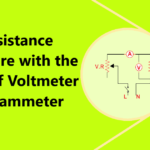
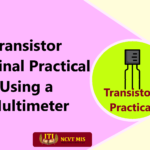
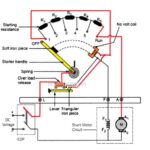

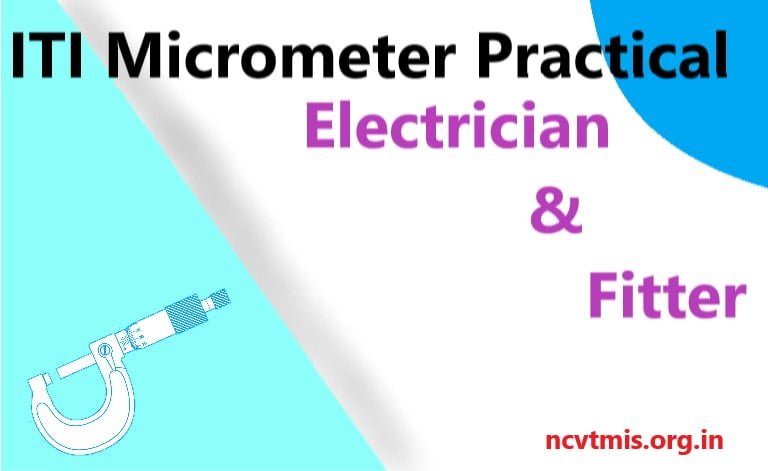
Comments are closed.